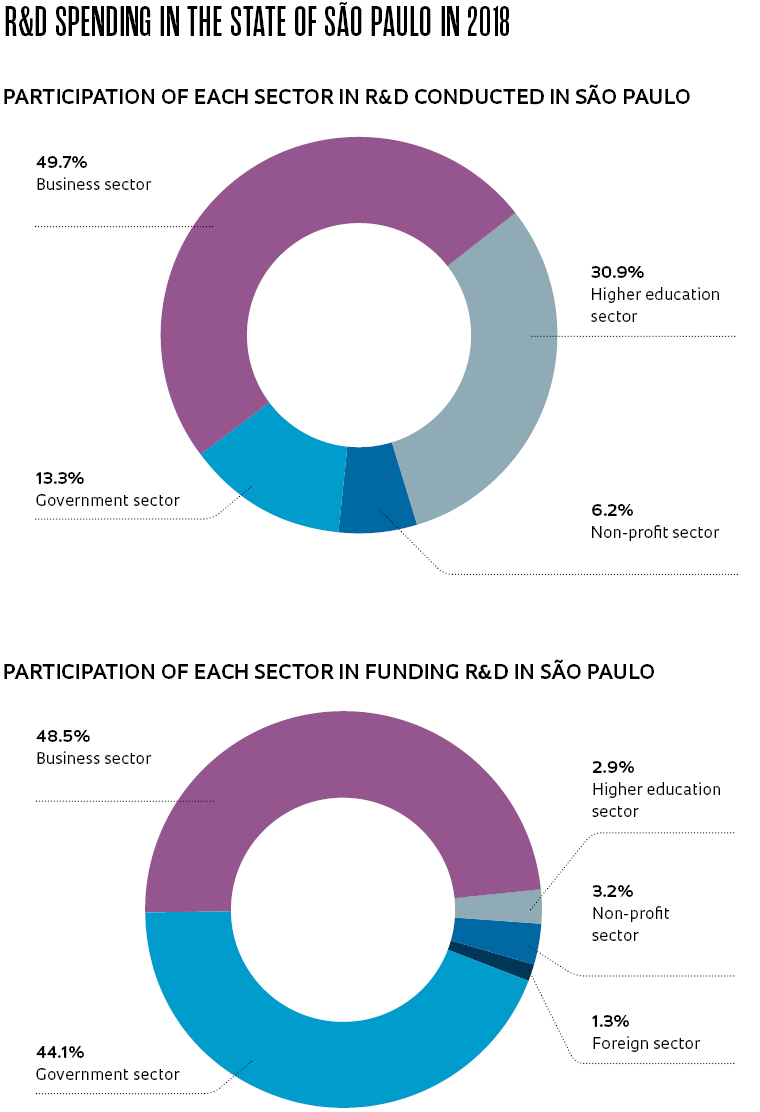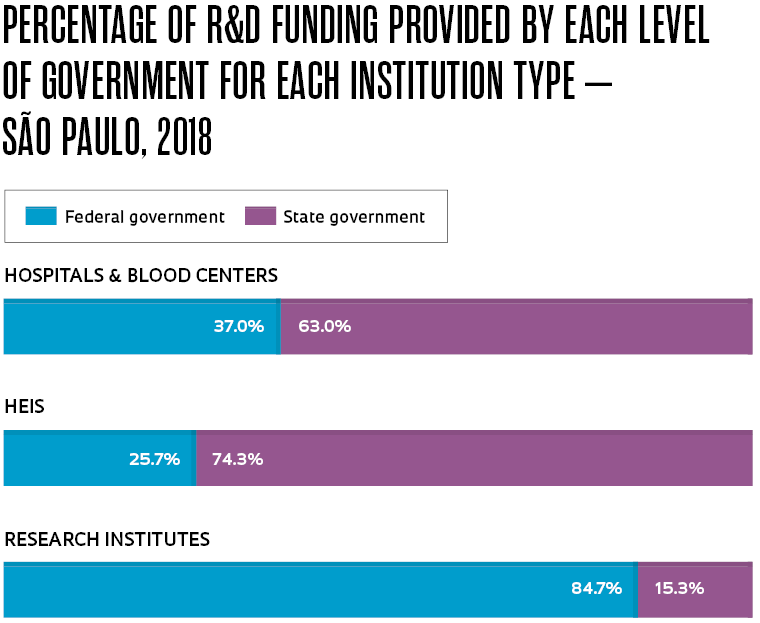- A FAPESP survey on R&D activities carried out in São Paulo in 2018 offers a precise distinction between who funds and who conducts R&D in the state, and how much the government contributes at different levels
- The graphs above show that the business sector conducts the most R&D, but the government sector contributes just as much to R&D funding. Of the total of R$25.6 billion spent on these activities in 2018, R$12.4 billion was provided by companies and R$11.3 billion by the government
Data
Public R&D funding in São Paulo

- Companies primarily fund their own R&D activities. The public sector funds some research by businesses, but it is particularly important to research by higher education institutions (HEIs), research institutes (RIs), and healthcare institutions (HIs) such as hospitals and blood centers
- The chart above shows the role each level of government played in funding R&D in 2018. Altogether, R&D spending by HEIs, RIs, and HIs totaled R$12.8 billion. About 80% of this amount (R$10.2 billion) corresponds to public investment. When broken down by level of government, 57.3% of this investment (R$5.8 billion), comes from the state and the remaining 42.7% (R$4.4 billion) from the federal government
- HEIs in São Paulo directed R$7.8 billion to R&D. Of this amount, R$6.5 billion (83.4%) was from the government: R$4.8 billion (74.3%) came from the state and R$1.7 billion (25.7%) from the federal government. At RIs, R&D spending was estimated at R$3.5 billion, of which R$2.8 billion was provided by the government: R$420 million (15.3%) from the state and R$2.3 billion (84.7%) from the federal government. HIs (hospitals and blood centers) invested R$1.5 billion in R&D: around R$980 million, or 64%, originating from government funding, mostly from the state (63% of public funding – R$621 million), supplemented by the federal government (37%, or R$365 million)

SOURCE FAPESP Studies & Indicators team (GEI), Survey of the São Paulo STI System in 2018
Republish